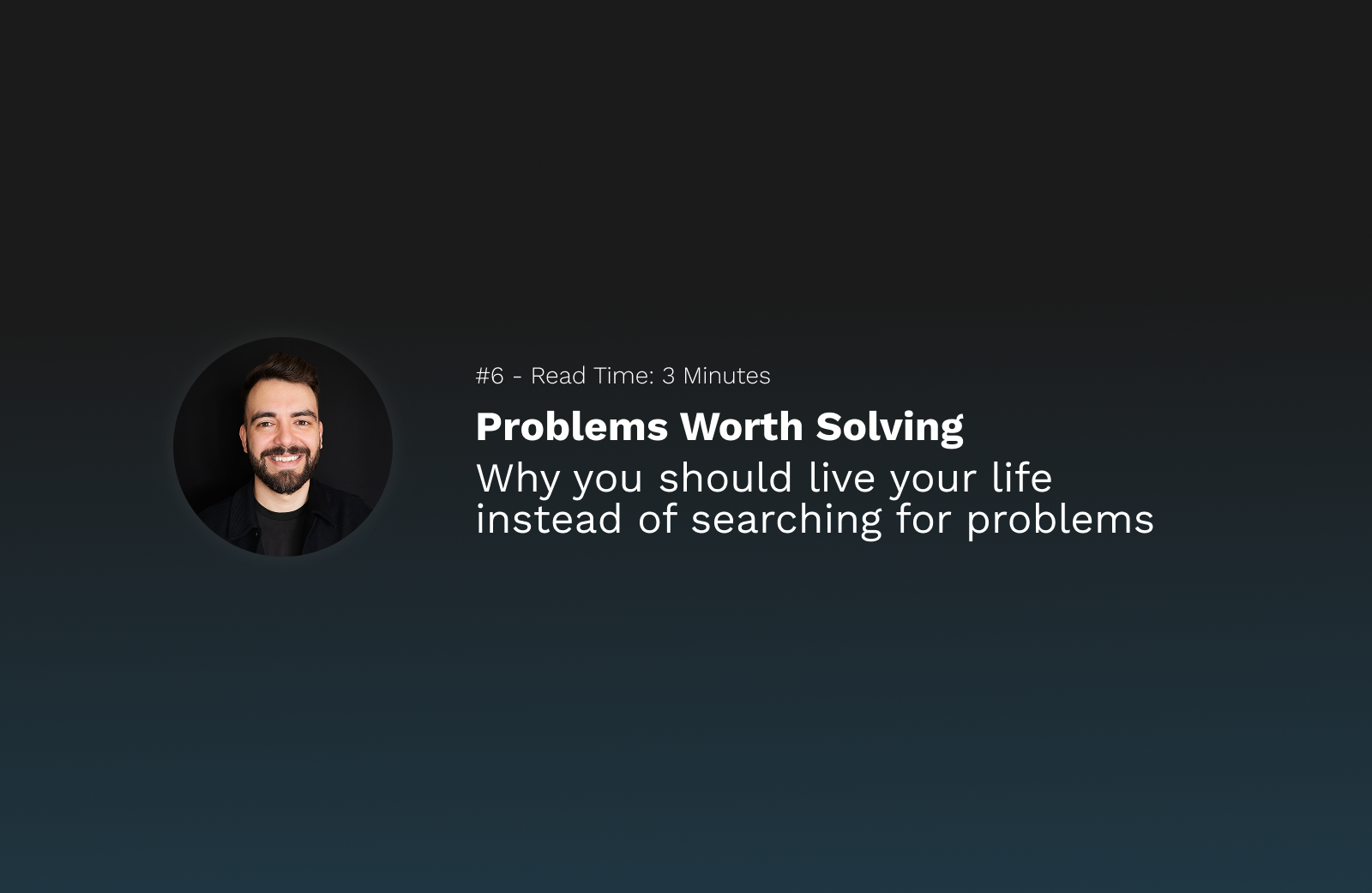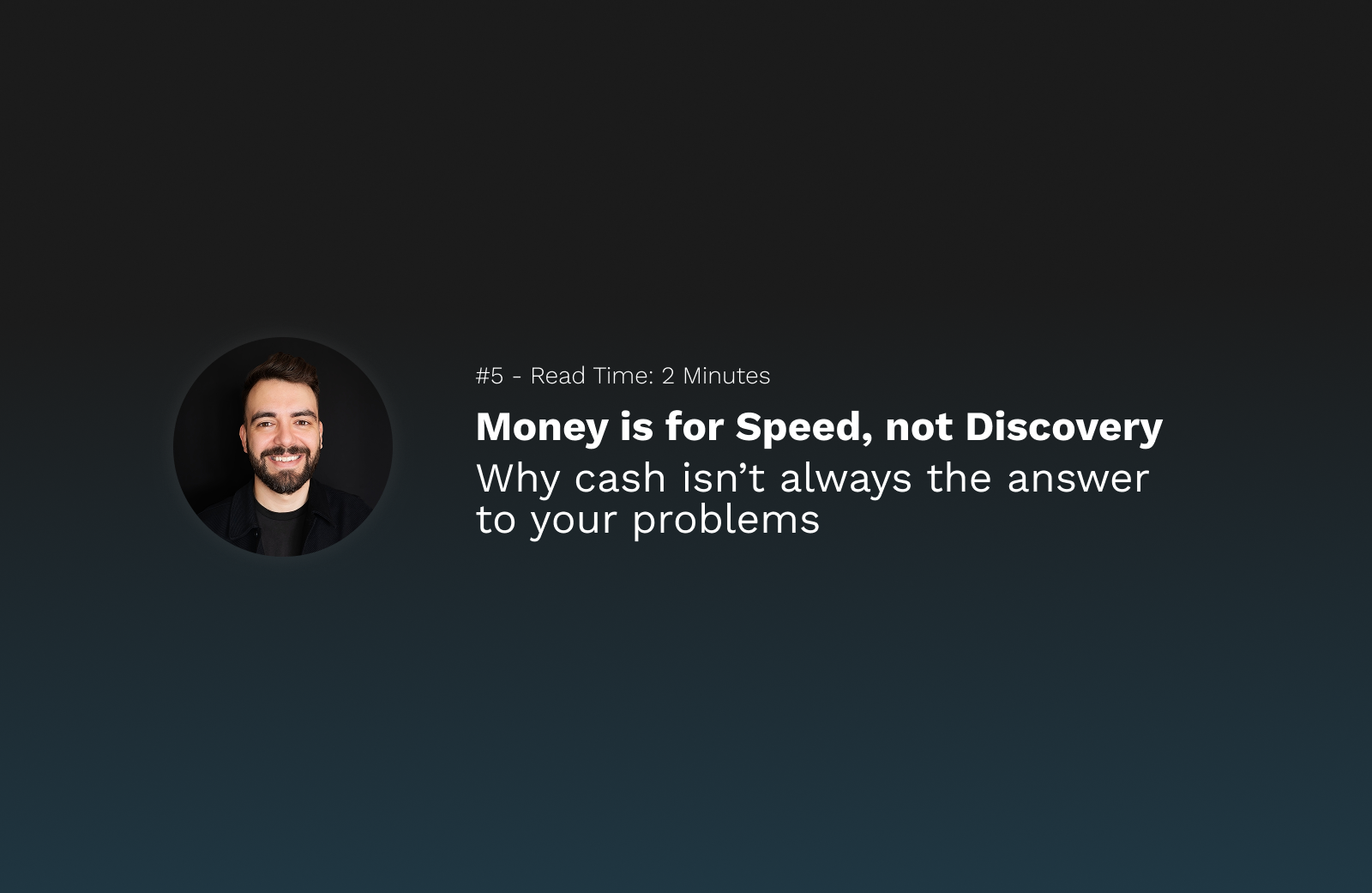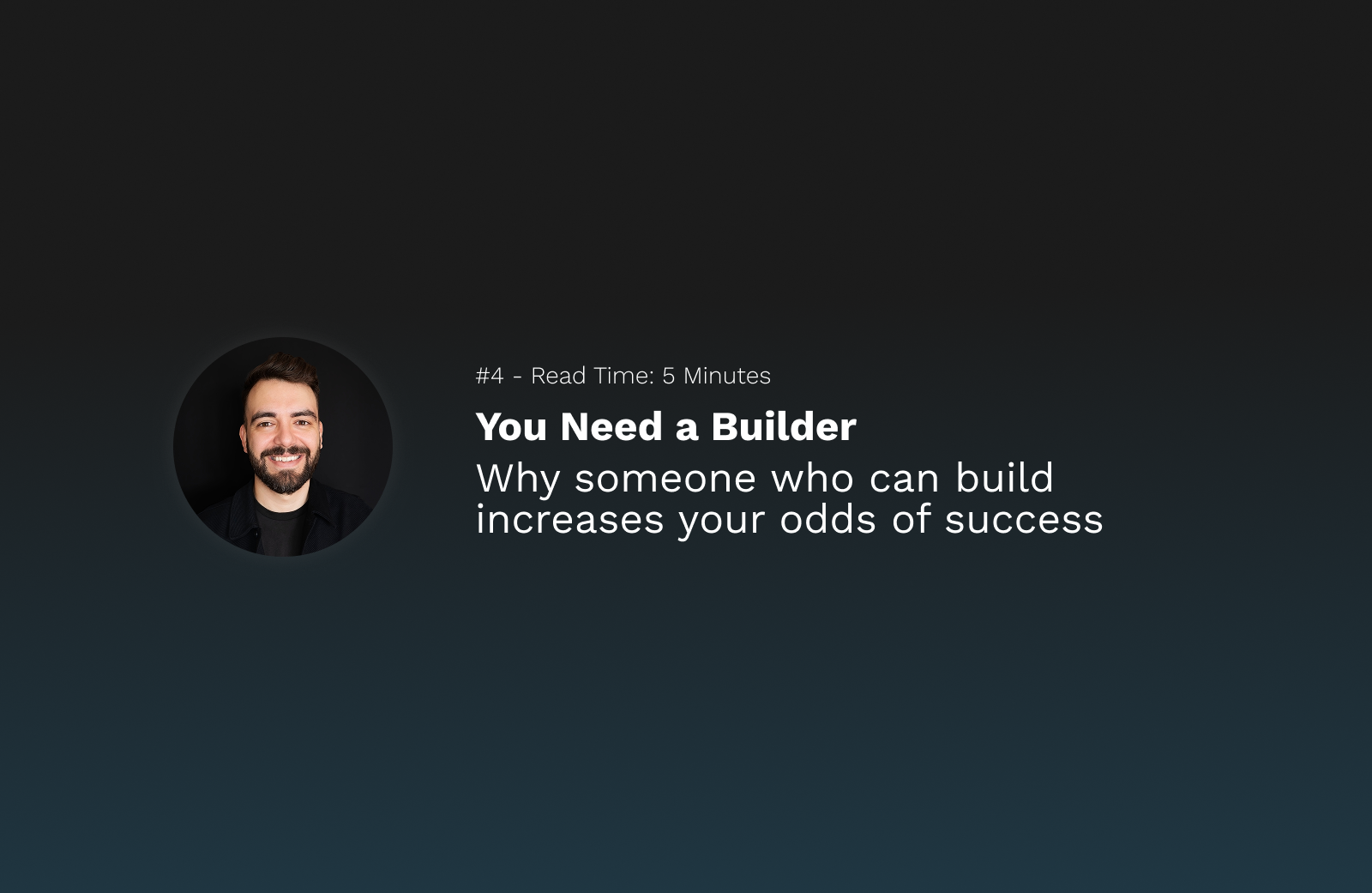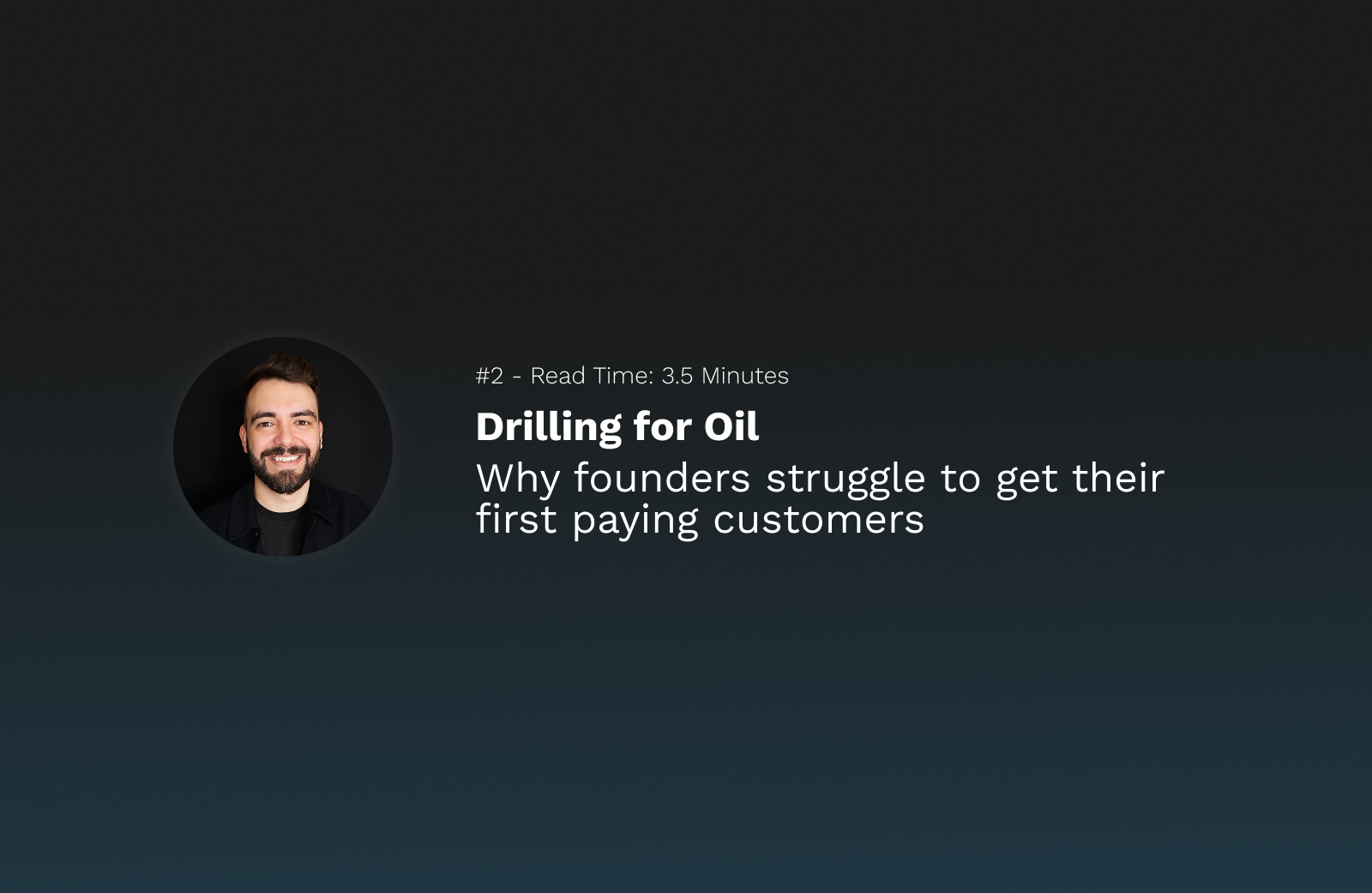Sell Before You Build
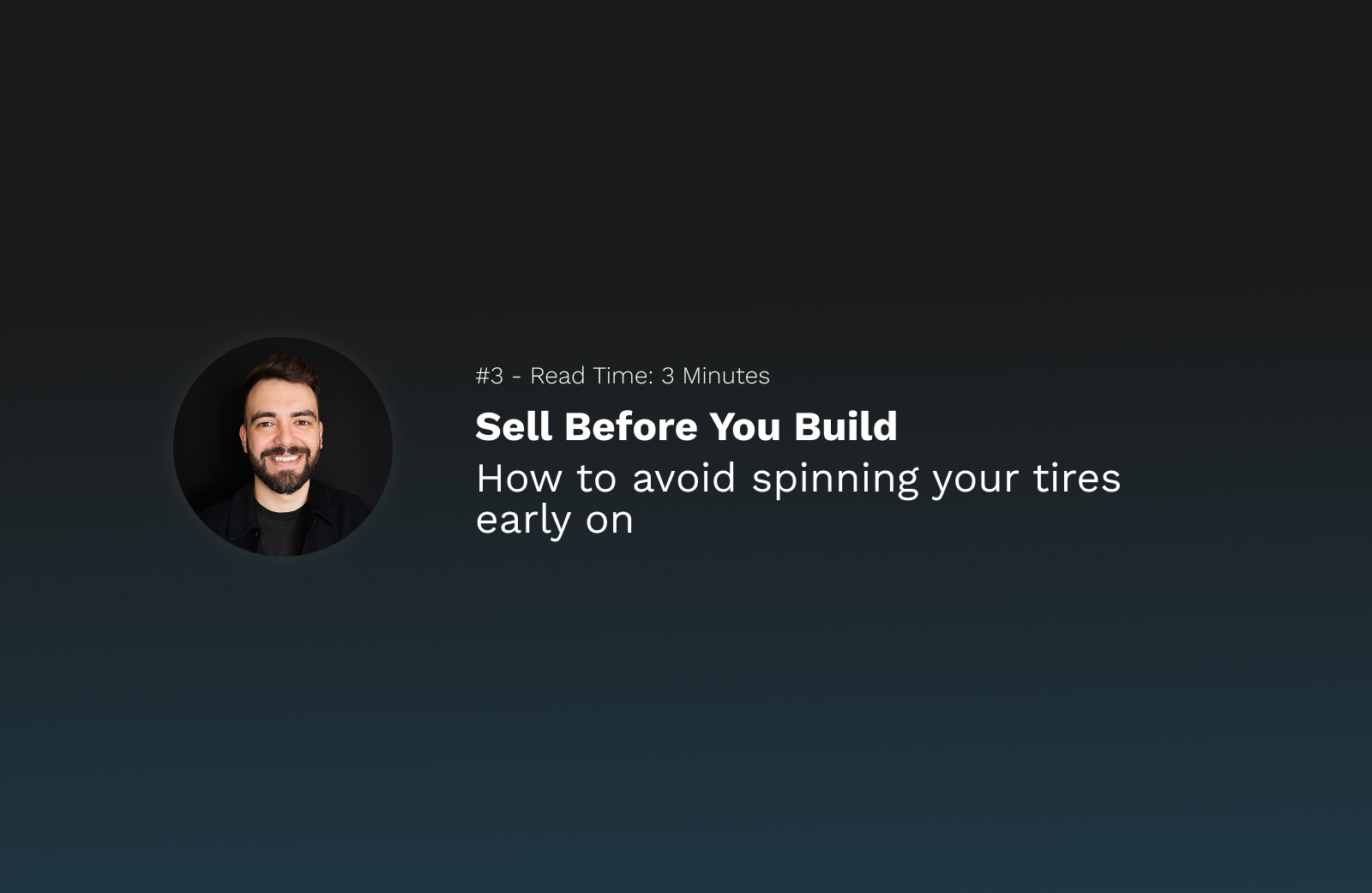
“I can’t sell something that doesn’t exist”.
This is the knee jerk reaction most founders have when I tell them to sell their product before they have built it.
It goes against everything they have been taught.
They usually use words like "afraid", “scam”, or “vaporware”.
I would use the phrase “risk mitigation”.
If you are trying to sell an unproven product, you likely can’t afford to sell it after it’s built.
You just haven't seen it yet.
Spinning Tires
Most teams will spin their tires early. Sometimes for years.
It isn’t because they aren’t working hard. Most are working too hard.
It is because they can’t iterate.
Why?
Because they are guessing.
Why?
Because they don’t understand why their users are not using their product (or not buying it).
Why?
Because they don’t have any usage data or paying customers.
Why?
Because they spent 3+ months building what they thought was right and gave it away to anyone who would say yes (and now no one is using it).
If you don’t ask people to jump through any hoops, you can’t be certain of their intentions.
If you give someone something for free, they may accept it because it is free - with no intentions of wanting to use it.
This is a false signal.
It leads you astray.
Prerequisites and Signals
You should measure market signals by how much they give up or pay (with time or money).
If they accept a free trial but won’t use the app or hop on a 15 minute call to talk to you, they are not paying with time or money.
It’s not a signal.
If they won’t jump through hoops, they won’t use the worst version of your product.
And the first version, by definition, is the worst version.
Technology Adoption Life Cycle

You’ve likely seen this bell curve before.
It’s how we adopt technology as a society.
Some people are predisposed to adopt less proven technology.
Most people think this has something to do with start-ups and personalities.
It does not. There are laggard start-ups and there are early adopter start-ups.
It is true for any population - no matter how you slice it.
Where someone falls on this chart has to do with risk (and how much they will accept).
The left side will take on more risk.
The right side will not.
You should care about this as a founder because only the innovators and early adopters will use a product that isn’t polished.
Early majority onward expect polish. It is part of their risk mitigation.
They want to see who you’ve helped. They want assurances.
The left side wants whatever you have, right now.
The left side will use your product. They will give you the data you need to iterate.
They will prevent you from spinning your tires.
Early stage start-ups spin their tires because they sold their product to early majority and later.
They spin their tires because they did not isolate innovators and early adopters.
How do I isolate them?
It is simple.
You need to find a behavior that only innovators and early adopters will demonstrate.
All of them will accept a free product. That’s why free beta periods (or whatever name they’ve come up with this year) create noise more often than clarity.
Only innovators and early adopters will pay you their hard earned money for something that doesn’t exist.
It’s that simple.
If you can get them to give you money for the promise of a solution, they are by definition, early adopters and innovators.
It’s why selling first works.
Give yourself permission to focus on what people want
Stop giving your product away for free.
Stop building a product without paying customers.
Ask people to jump through hoops to be your early adopters.
Create a funnel in which the only people who can emerge at the end are the people who will use your product and allow you to iterate.
Anything else is simply busy work until you eventually find those people anyway.
Take the shorter path.
Take the safer path.
Sell. Then build.
Until next time, J

